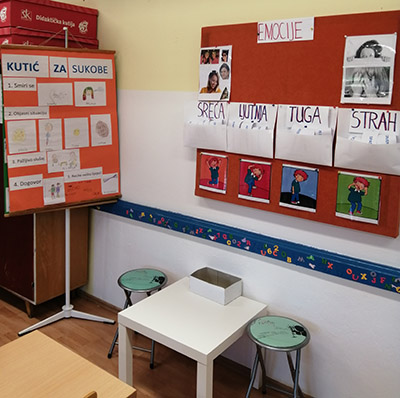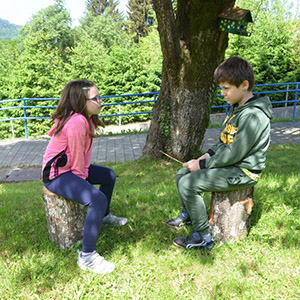ADDRESSING STUDENTS’ QUARRELS AT SCHOOL WITH METHOD (PART 1 OF 3)
The method that Daniele Novara called “Litigare Bene,” is the result of a long exploration of the possibility of teaching how to quarrel. The Montessori and the Majeutic approach by Daniele Novara influenced the development of the Litigare Bene method, because they encourage children’s independence.
The starting hypothesis, confirmed by research, is that children throughout childhood have great abilities to self-regulate their quarrels.
Childhood quarrel is a form of interaction that, if handled correctly, helps personal and social development.
The Litigare bene method consists of two steps back:
- do not look for the culprit, because there is no culprit.
- do not impose the solution.
and two steps forward:
- get them to talk to each other about the quarrel.
- encourage agreement between the parties.
The Litigare Bene method was tested in schools near Turin in 2011. Many Italian schools have applied it since 2010. In the Montessori kindergarten “Il Sassolino” (Italy) – managed by Foundation Intro, partner of this Erasmus+ Consortium – the method was applied since 2012. A part of the Results of this project is a qualitative survey done by Intro on the long terms effects of applying Litigare bene at school. The survey led to an audiovisual with 17 teenagers who have important messages.
The role of teacher
The teacher encourages the children to sit and continue the quarrel talking, inside the Conflict Corner. Children express their emotions and tell their side of the story. The teacher is near them, not too close. If necessary, she/he helps students with questions – what happened?, how do you feel?, what can you do?; ensures conditions (arranges the conflict corner) and encourages students to come to an agreement.
Teachers leave the role of judge.
In traditional schooling, teachers played an active role in children’s conflicts. They determined who was to blame and how to resolve the conflict.
Now the responsibility for the conflict is given to the children, which contributes to their independence.
The rules given to students are, first of all, to calm down by letting out emotions verbally, or in some other way that does not endanger the safety of others. They have to exercise active listening: while one speaks, the other listens and does not interrupt.
It is not necessary to reach an agreement.
A whole school approach makes a big difference.
The principal of the school gets to know the method, and encourages its application. He/she has to ensure working conditions and support.
Teachers’ collegium has to be involved. All teachers need to be trained: for example, the Casa dei Bambini “Il Sassolino” hosted teachers from OŠ Ivana Gorana Kovačića of Vrbovsko (Croatia) to do job shadowing and see the method applied in the daily routine.
On the other hand, the method needs to be introduced systematically, with the support of pedagougue and educational professionals.
Remember to involve Parents
They need to be informed about the method through meetings.
They can support teachers, by encouraging children’s independence in expressing emotions. It is important that parents show their feelings and encourage children to express theirs.
The method can also be used in the family when there is a quarrel between siblings.
Also during free time or sports activities, children often get into conflicts with their peers. The skills they have acquired by applying the method can help them resolve conflict non-violently.
The experience of our Erasmus+ partner OŠ Ivana Gorana Kovačića
The work done by this school is really interesting.
The school has positive experiences with Peer Mediation for students aged 11 to 14 but, but was missing a method for smaller children.
In the introduction of an educational approach to quarrels at school, the preparation activities were very important. In Vrbovsko, through nine workshops, students have learned the 4 basic emotions and the difference between conflict and violence. The workshops were interactive and experiential. They included storytelling, conversation, dramatization, drawing…


Conflict corner was arranged in the classroom, but could also be arranged in the corridor or in the school garden.
The results of this experience are that children became independent in handling quarrells, conflicts were resolved more easily and some unpleasant situations – taking personal objects, making fun of others’ drawings – no longer exist.
The conflict has been returned to the children. The teachers just support the children in solving the conflict independently. And this means less stress for adults.
This video gives an overview of this experience from many voices of the school, children included. The method was presented by OŠ Ivana Gorana Kovačića in several schools and kindergartens in Croatia, Montenegro and Slovenia and through the network of peaceful schools.


